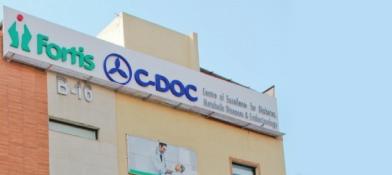Breast augmentation
Breast augmentation is the cosmetic procedure that is done for women having smaller breast. The procedure modifies the shape, size, and fineness of the breast. The procedure is done using various techniques depending on the patient desires and surgeon discretion.
Indications
Many women go for breast augmentation for different purposes.
- To correct the shape and size of underdeveloped breasts.
- Women who have breast changes after childbirth also seek augmentation to enhance their appearance even more.
- To correct the asymmetry.
Types of Breasts Augmentation
The procedures of breast augmentation include breast implants and fat transfer augmentation.
Breast implants Breast implants are commonly used tools for breast augmentation surgery. Most of the implants are FDA-approved. The FDA revised its breast implant guidelines in 2017 to improve patient safety, raise awareness of the possible adverse effects of breast implants, and guarantee that patients give their informed permission before implant placement. The different types of implants used are:
Saline breast implants: Most preferred implants where a sterile salt water is filled during surgery in a closed circuit. The filling is done using IV tubing to connect the saline bag to syringe and then to the implant. If there is any rupture of implant after surgery, the body absorbs the saline without causing any side effects.
Silicone Breast Implants have been designed to mimic the natural feel of breast tissue. When there is implant breakage, the gel will stay within the implant or leak outside the breast. One has to ensure proper functioning of silicone implants by regular consultation with plastic surgeon.
Form-Stable Breast Implants: Also known as "gummy bear" implants, these maintain their shape even if the shell ruptures. Compared to traditional implants they are made of a thicker, firmer silicone gel. However, they require a larger incision during surgery.
Smooth Breast Implants: These implants provide a smooth and soft feel among all types and provide a natural and aesthetic look to the breast compared to other implants.
Round Breast Implants: These implants create a fuller breast appearance. Their round shape reduces the risk of noticeable changes if they rotate out of place.
Textured Breast Implants: These implants promote scar tissue formation around the implant, reducing the risk of movement within the breast. Textured Breast Implants are used to limit motion within the chest by inducing scar tissue around the implant.
Advantages of Breast Augmentation
The reasons for women to opt for breast augmentation include.
- When body shape and structure are enhanced, some women experience great increases in confidence and self-esteem.
- When one breast size is significantly smaller than the other, breast augmentation can make a more balanced appearance.
- Breast augmentation help restore the volume lost after weight loss, pregnancy, or breastfeeding.
- The procedure can also correct congenital deformities like Poland syndrome, where breast tissue is underdeveloped.
Risks of breast implants
According to the FDA the potential risks of implant-based breast augmentation include.
Capsular contracture: Sometimes the scar tissue around the implant thickens abnormally, causing constriction of one or both breasts. This condition is known as capsular contracture. It usually happens one or two years after surgery.
Implant rupture: Silicone gel implants does not rupture unlike saline implants. However, when there is any force or puncture from the needle, there may be a chance of rupture. It is important to seek medical attention during such a situation.
Implant rippling: This condition happens when the edges of the implant become visible through the breast skin, and it is especially observed with underfilled saline implants.
Loss of nipple sensation: Although rare, some women experience reduced sensitivity due to reduced blood flow to the area where breast skin is stretched too tightly over the implant.
BIA-ALCL: Breast implant-associated anaplastic large cell lymphoma (BIA-ALCL) is a very rare type of lymphoma that is caused by textured breast implants. However, the FDA has not considered BIA-ALCL as breast cancer since 733 cases were reported in 2020.
Other common risk includes infection and bleeding.
Contraindications for breast augmentation with implants
Women with active infections
Women diagnosed and treated with breast cancer.
Pregnant or breastfeeding women.
Steps to ensure the safety of breast implants:
By following the below steps, one can ensure safety when receiving breast implants:
- Select a board-certified cosmetic surgeon with expertise in breast augmentation and an understanding of risks and benefits.
- Breast implants are not permanent insertions, they have an expiration date for when they need to be replaced. Due to this fact, regular screenings are always recommended.
- The proper follow-up and screening with surgeon instructions are essential in monitoring implant status and rupture detection particularly for textured implants.
- Saline implants filled with saltwater are safer, hence if someone is worried about the risk, they should opt for these because these kinds can’t rupture silently and in case they do rupture, they possess a little health risk.
These remarks are general; therefore, a surgeon should be consulted for personalized advice based on personal needs and circumstances.
Fat transfer breast augmentation
Fat transfer breast augmentation involves taking out your own body fat to enhance your breasts’ size and shape. It is an alternative way of enlarging the breasts without using implants and can be tailored to suit your needs.
Procedure
This procedure encompasses removing fat from other parts of your body where there is excessive fat such as the abdomen, thighs and buttocks by means of liposuction. Subsequently the fat undergoes a process referred to as fat processing to achieve the desired results. The processed fat is injected under the breast or armpit through a small incision.
Fat augmentation is beneficial for candidates with the criteria below.
Those who desire a more natural augmentation option.
Individuals with more fat in areas like the abdomen, thighs, or flanks.
Individuals seeking a slight increase in breast size.
Fat transfer breast augmentation is mainly used:
Increase the size of your breasts by up to one cup size.
Correct asymmetry.
Add cleavage.
Improve the shape of your breasts.
The surgery is performed under general anaesthesia which takes two to three hours. The individual can be discharged on the same day itself. The recovery from fat transfer breast augmentation surgery is easy and rapid. Some may experience swelling, pain and bruising however these symptoms subside within a weeks or month after surgery.
Conclusion:
Breast augmentation surgery is aesthetic surgery which changes the life to many women who desire for breast modification. However, one has to consider all the factors before going for it.
Popular Searches :
Hospitals: Cancer Hospital in Delhi | Best Heart Hospital in Delhi | Hospital in Amritsar | Hospital in Ludhiana | Hospitals in Mohali | Hospital in Faridabad | Hospitals in Gurgaon | Best Hospital in Jaipur | Hospitals in Greater Noida | Hospitals in Noida | Best Kidney Hospital in Kolkata | Best Hospital in Kolkata | Hospitals in Rajajinagar Bangalore | Hospitals in Richmond Road Bangalore | Hospitals in Nagarbhavi Bangalore | Hospital in Kalyan West | Hospitals in Mulund | Best Hospital in India | | Cardiology Hospital in India | Best Cancer Hospital in India | Best Cardiology Hospital in India | Best Oncology Hospital In India | Best Cancer Hospital in Delhi | Best Liver Transplant Hospital in India
Doctors: Dr. Rana Patir | Dr. Rajesh Benny | Dr. Rahul Bhargava | Dr. Jayant Arora | Dr. Anoop Misra | Dr. Manu Tiwari | Dr. Praveer Agarwal | Dr. Arup Ratan Dutta | Dr. Meenakshi Ahuja | Dr. Anoop Jhurani | Dr. Shivaji Basu | Dr. Subhash Jangid | Dr. Atul Mathur | Dr. Gurinder Bedi | Dr. Monika Wadhawan | Dr. Debasis Datta | Dr. Shrinivas Narayan | Dr. Praveen Gupta | Dr. Nitin Jha | Dr. Raghu Nagaraj | Dr. Ashok Seth | Dr. Sandeep Vaishya | Dr. Atul Mishra | Dr. Z S Meharwal | Dr. Ajay Bhalla | Dr. Atul Kumar Mittal | Dr. Arvind Kumar Khurana | Dr. Narayan Hulse | Dr. Samir Parikh | Dr. Amit Javed | Dr. Narayan Banerjee | Dr. Bimlesh Dhar Pandey | Dr. Arghya Chattopadhyay | Dr. G.R. Vijay Kumar | Dr Ashok Gupta | Dr. Gourdas Choudhuri | Dr. Sushrut Singh | Dr. N.C. Krishnamani | Dr. Atampreet Singh | Dr. Vivek Jawali | Dr. Sanjeev Gulati | Dr. Amite Pankaj Aggarwal | Dr. Ajay Kaul | Dr. Sunita Varma | Dr. Manoj Kumar Goel | Dr. R Muralidharan | Dr. Sushmita Roychowdhury | Dr. T.S. MAHANT | Dr. UDIPTA RAY | Dr. Aparna Jaswal | Dr. Ravul Jindal | Dr. Savyasachi Saxena | Dr. Ajay Kumar Kriplani | Dr. Nitesh Rohatgi | Dr. Anupam Jindal
Specialties: Heart Lung Transplant | Orthopedic | Cardiology Interventional | Obstetrics & Gynaecology | Onco Radiation | Neurosurgery | Interventional Cardiology | Gastroenterologist in Jaipur | Neuro Physician | Gynecologist in Kolkata | Best Neurologist in India | Liver Transfer | Best Cardiologist in Delhi



























